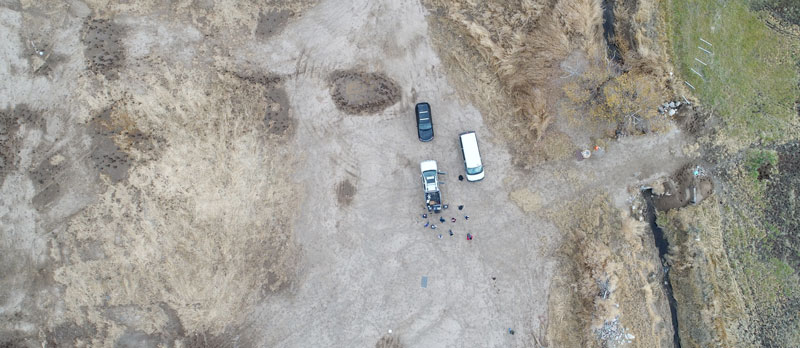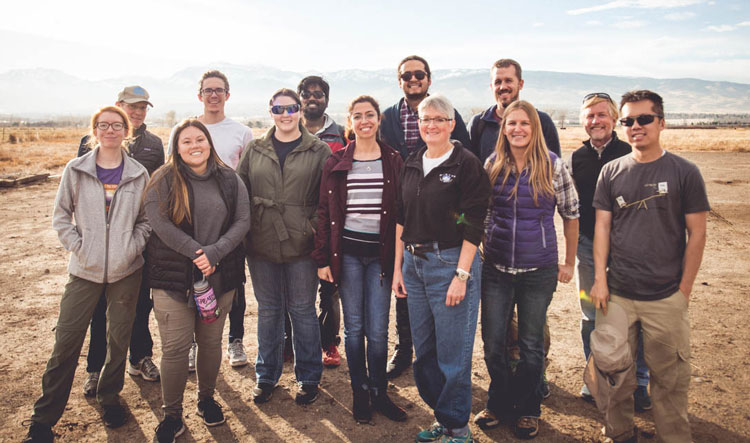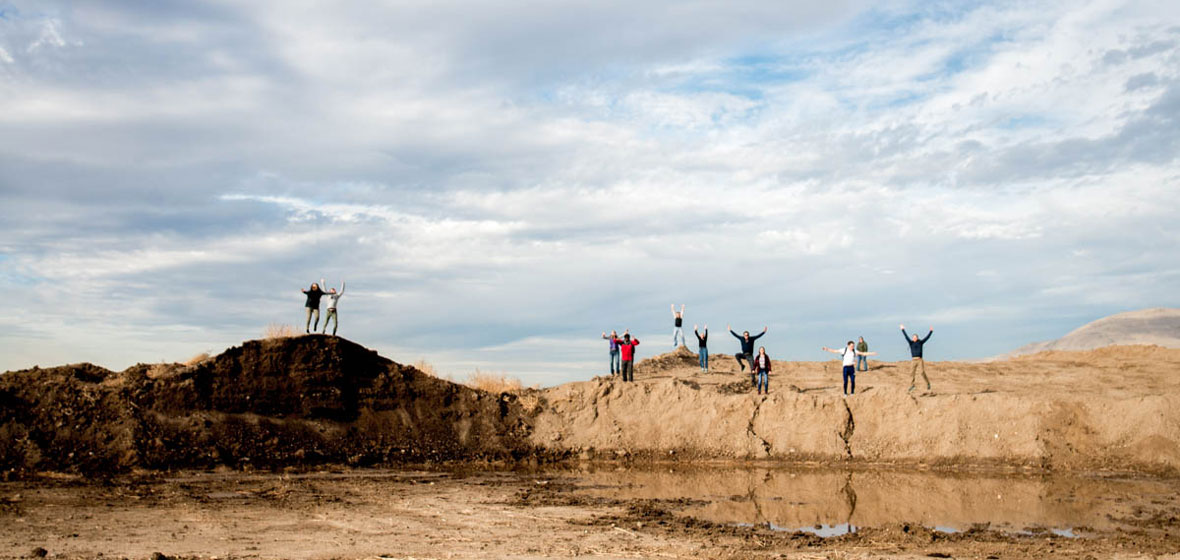While most spent the Wednesday before Thanksgiving waiting for the buzz of their oven timers, two classes at the University of Nevada, Reno spent the afternoon listening to a different kind of buzzing at the University's drone testing field in South Reno.
Geology department professor, Scott Tyler and department chair and professor Wendy Calvin brought two classes of graduate students outside to get hands-on experience flying drones as a tool for research.
Tyler's class explores the use of unmanned aircraft or drones for remote sensing in hydrology and environmental science. The course is one module of six in a national virtual university course involving five other universities around the country. Tyler served as chairman on the Board of Directors for the National Science Foundation supported Consortium of Universities for the Advancement of Hydrologic Science (CUAHSI), which launched this virtual course for the first time this 2017 Fall semester.

The photo above is one of thousands taken from the drone. When stitched together, these images can be used to create a topographical map accurate to within one centimeter.

The students were each given the opportunity to fly the drone and to use the portable field spectrometer.
"The driving rationale for the course is that most hydrology programs have a limited number of faculty and expertise, and by combining multiple universities, we can offer concepts and topics that many universities cannot provide due to limited staff," Tyler said. "The University of Nevada, Reno is one of the few schools using drones for hydrology, so we offered a module in drone remote sensing."
The drone photography taken can be interpreted and turned into a topographical map that is accurate to within one centimeter.
"We can use these stitched-together photographs to create accurate topographical maps for things like landslides, or before and after big flood events to figure out how much sediment moved around, or how much motion there might be on a fault," Tyler said. "All from simple photography using a drone."
While Calvin's "Advanced Imaging Spectroscopy Remote Sensing" class is focused mostly on interpreting aircraft and satellite data, she joined with Tyler's drone module for the month of November to give her students the opportunity to work with, interpret and validate drone imagery. Calvin's class had a few research tools of their own out that day, including a portable field spectrometer.
"The portable field spectrometer measures the sunlight that is reflected as a function of wavelength, from colors that our eyes can see all the way out to the near-infrared that our eyes can't see," Calvin said. "We have the students doing a field calibration activity where they take a measurement of the sun and measurement of a target in the field to get a surface reflectance measurement that we can compare with pictures taken from the drone."
Each student was given the opportunity to fly the drone and use the field spectrometer.
"It's great opportunity to have two graduate level classes out here together," Tyler said. "It's an opportunity for students to see and use different tools they haven't had access to before."
A video of the day's class has been broadcast to the other five universities involved in the virtual course, including the University of Wisconsin, Madison; Michigan State University; University of Delaware; University of California, Santa Barbara and the State University of New York, Buffalo.
Suspendisse euismod tristique felis a gravida. Proin commodo maximus est nec condimentum. Sed malesuada urna augue, in viverra quam tristique at. Fusce at fringilla lacus, nec volutpat nisi. Nulla efficitur fringilla ante, nec vulputate felis laoreet in. Vestibulum scelerisque porta metus, quis volutpat velit posuere vitae. Phasellus dolor mi, eleifend vel imperdiet vitae, accumsan consequat eros. Aenean in malesuada elit. Fusce vehicula purus non quam elementum, vel tempus ex fermentum.
Suspendisse euismod tristique felis a gravida. Proin commodo maximus est nec condimentum. Sed malesuada urna augue, in viverra quam tristique at. Fusce at fringilla lacus, nec volutpat nisi. Nulla efficitur fringilla ante, nec vulputate felis laoreet in. Vestibulum scelerisque porta metus, quis volutpat velit posuere vitae. Phasellus dolor mi, eleifend vel imperdiet vitae, accumsan consequat eros. Aenean in malesuada elit. Fusce vehicula purus non quam elementum, vel tempus ex fermentum.











